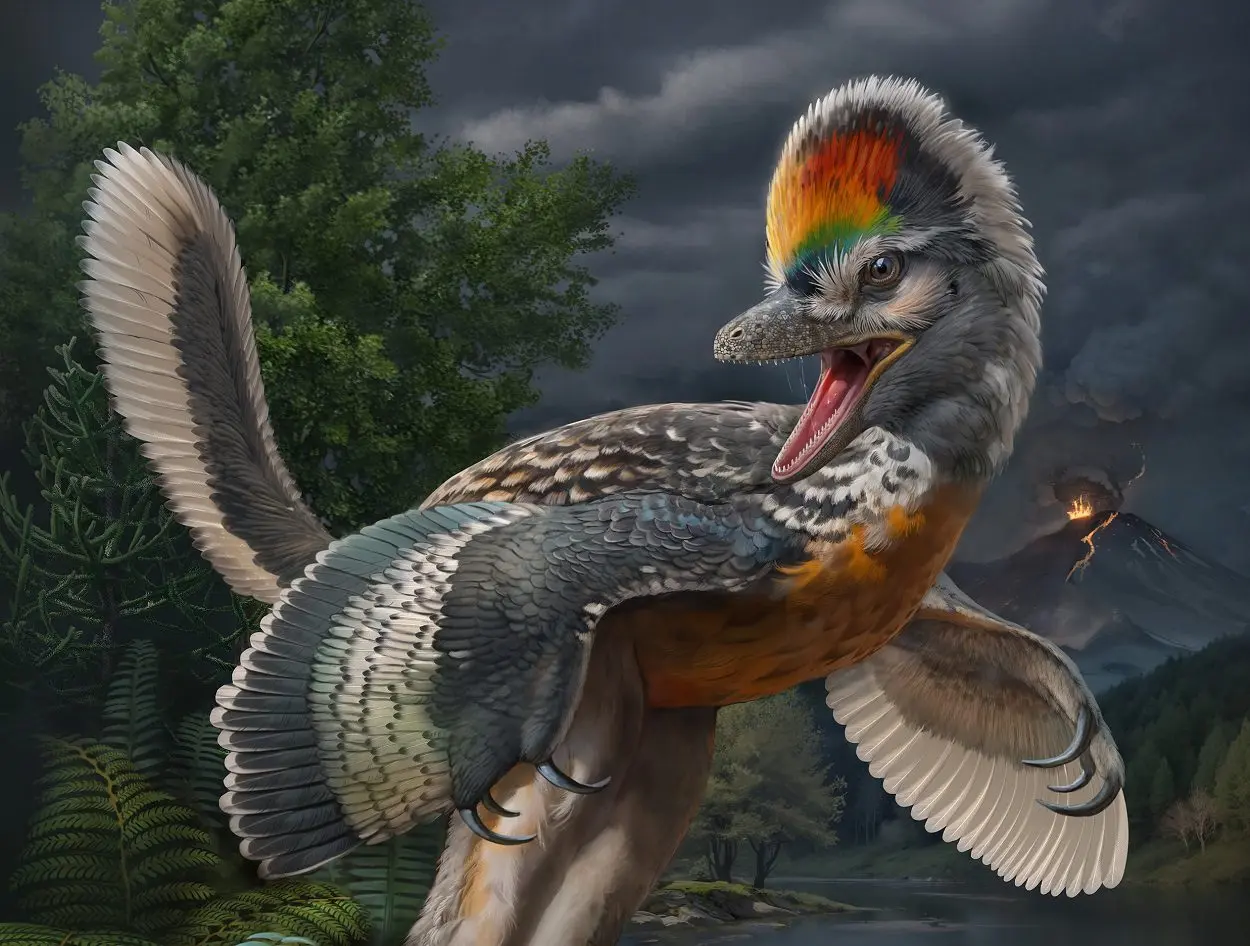Birds evolved from theropod dinosaurs during the Late Jurassic period, however, our knowledge of the initial stages of Avialae’s evolution is limited due to a scarcity of Jurassic fossils.
Previous studies by palaeontologists have led to the discovery of avialans from the Middle-Late Jurassic Yanliao Biota in northeast China, and the slightly younger German Solnhofen Limestones, however, these discoveries provide limited data data which doesn’t fill a 30 million year gap.
A collaborative team of researchers from the Institute of Vertebrate Palaeontology and Palaeoanthropology (IVPP) of the Chinese Academy of Sciences in Beijing, and the Fujian Institute of Geological Survey (FIGS), has unveiled a 150-million-year-old avialan theropod from Zhenghe County, Fujian Province, China.
Their findings, published in the journal Nature, presents a new species named Fujianvenator prodigiosus, displaying a peculiar mix of traits shared with other avialans, troodontids, and dromaeosaurids, illustrating the concept of evolutionary mosaicism in early bird development.
“Our comparative analyses show that marked changes in body plan occurred along the early avialan line, which is largely driven by the forelimb, eventually giving rise to the typical bird limb proportion,” said Dr. WANG Min from IVPP, lead and corresponding author of the study. “However, Fujianvenator is an odd species that diverged from this main trajectory and evolved bizarre hindlimb architecture.”
The surprisingly elongate lower leg and other morphologies, in combination with other geological observations, suggest that Fujianvenator lived in a swamp-like environment and was a high-speed runner or a long-legged wader, representing a previously unknown ecology for early avialans.
“Besides Fujianvenator, we have found abundant other vertebrates, including teleosts, testudines and choristoderes,” said XU Liming from FIGS, lead author of the study.
In the Late Jurassic to Early Cretaceous period, southeastern China experienced significant tectonic activity caused by the subduction of the ancient Pacific plate. This geological phenomenon led to widespread magmatic events and the formation of concurrent fault-depression basins, which is where Fujianvenator’s fossils were unearthed. Notably, this geological context closely resembles the Late Jurassic conditions found in northern and northeastern China, where the older Yanliao Biota is preserved.
“The extraordinary diversity, unique vertebrate composition, and palaeoenvironment strongly indicate that this locality documents a terrestrial fauna, which we named the Zhenghe Fauna,” said Dr. ZHOU Zhonghe from IVPP, co-author of the study. In-situ radioisotopic dating and stratigraphic surveys constrain the Zhenghe Fauna to the period from 150–148 Ma. Therefore, Fujianvenator documents one of the stratigraphically youngest and geographically southernmost members of the Jurassic avialans.
https://doi.org/10.1038/s41586-023-06513-7
Header Image Credit : ZHAO Chuang





